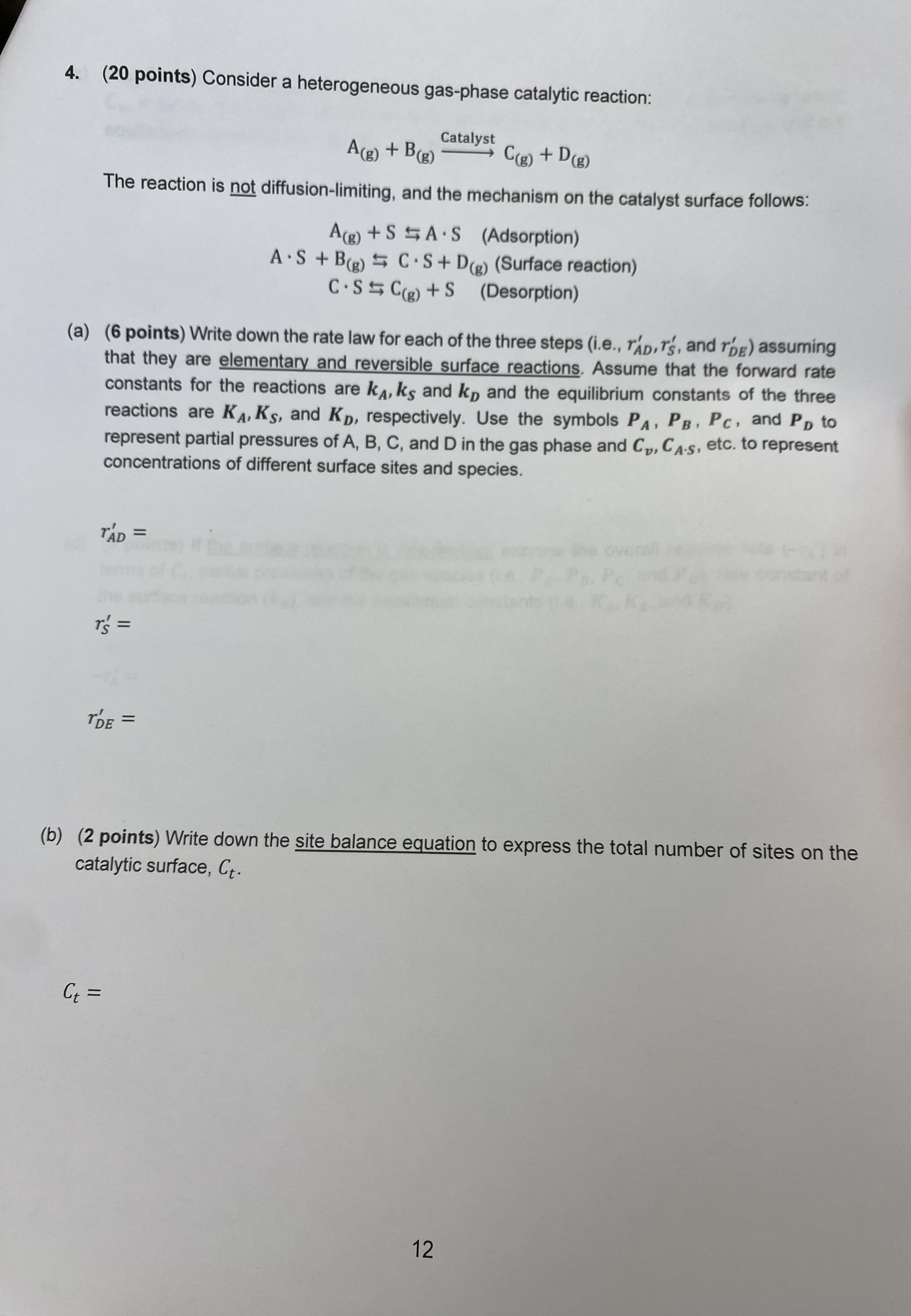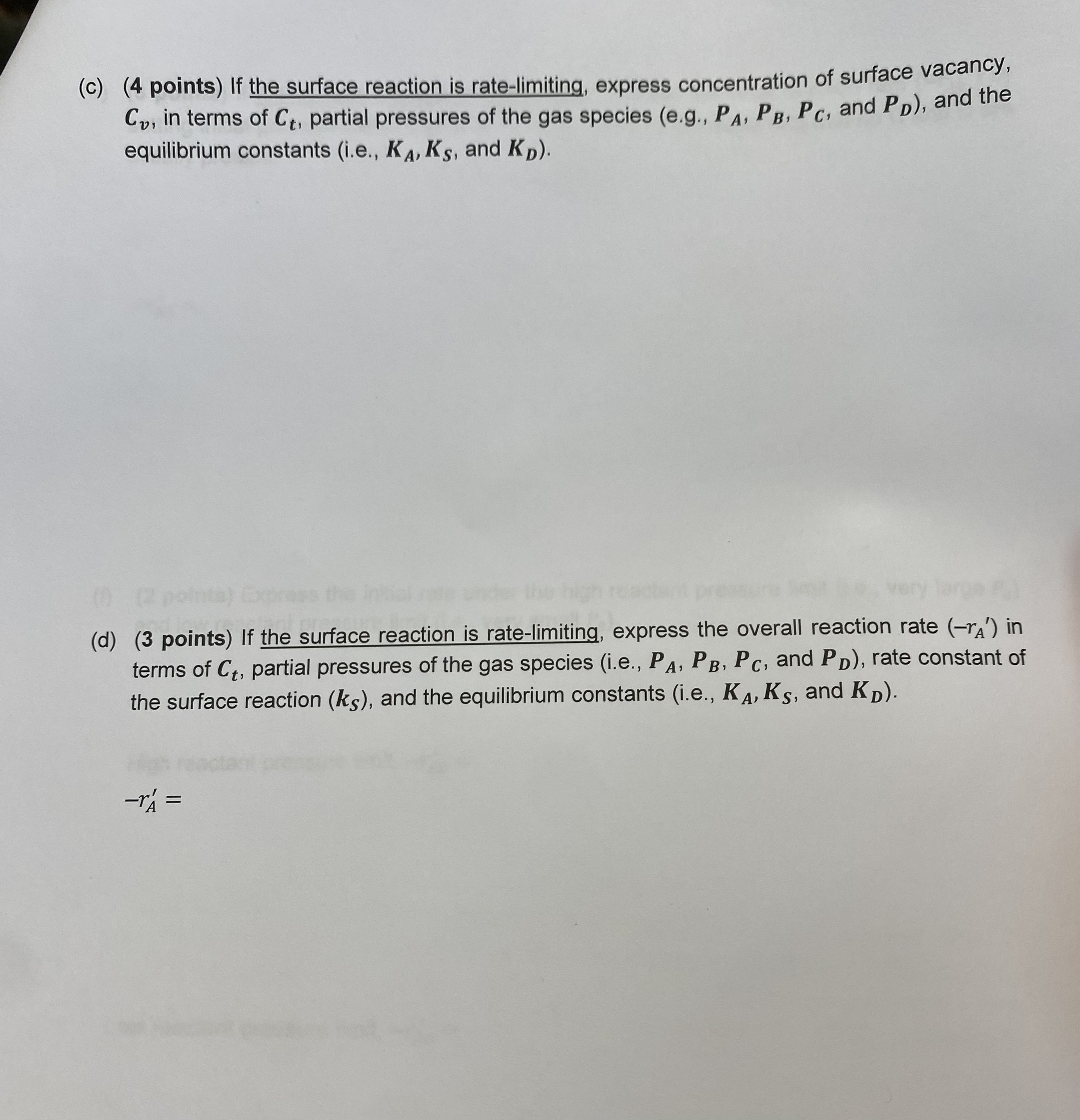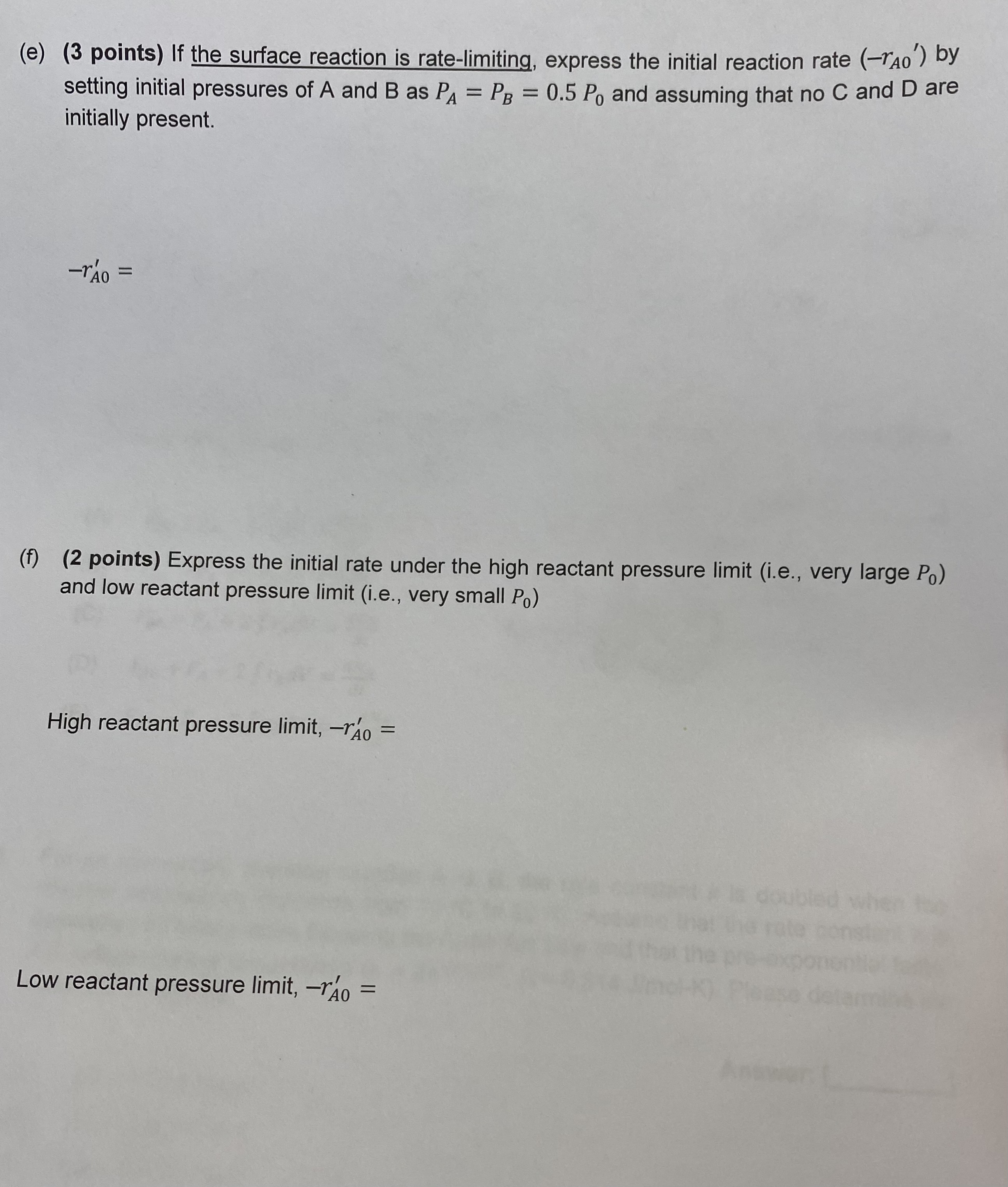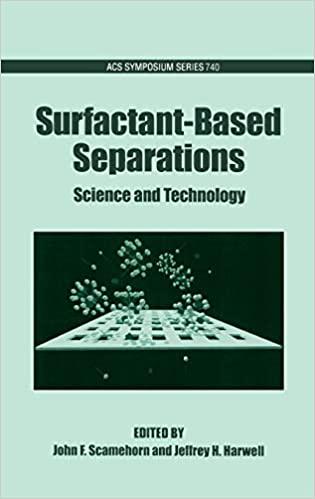Answered step by step
Verified Expert Solution
Question
1 Approved Answer
4. (20 points) Consider a heterogeneous gas-phase catalytic reaction: A(g)+B(g)CatalystC(g)+D(g) The reaction is not diffusion-limiting, and the mechanism on the catalyst surface follows: A(g)+SAS(Adsorption)AS+B(g)CS+D(g)(Surfacereaction)CSC(g)+S(Desorption) (a)


 4. (20 points) Consider a heterogeneous gas-phase catalytic reaction: A(g)+B(g)CatalystC(g)+D(g) The reaction is not diffusion-limiting, and the mechanism on the catalyst surface follows: A(g)+SAS(Adsorption)AS+B(g)CS+D(g)(Surfacereaction)CSC(g)+S(Desorption) (a) (6 points) Write down the rate law for each of the three steps (i.e., rAD,rS, and rDE ) assuming that they are elementary and reversible surface reactions. Assume that the forward rate constants for the reactions are kA,kS and kD and the equilibrium constants of the three reactions are KA,KS, and KD, respectively. Use the symbols PA,PB,PC, and PD to represent partial pressures of A,B,C, and D in the gas phase and Cv,CAS, etc. to represent concentrations of different surface sites and species. rAD= rS= rDE= (b) (2 points) Write down the site balance equation to express the total number of sites on the catalytic surface, Ct. (c) (4 points) If the surface reaction is rate-limiting, express concentration of surface vacancy, Cv, in terms of Ct, partial pressures of the gas species (e.g., PA,PB,PC, and PD ), and the equilibrium constants (i.e., KA,KS, and KD ). (d) (3 points) If the surface reaction is rate-limiting, express the overall reaction rate (rA) in terms of Ct, partial pressures of the gas species (i.e., PA,PB,PC, and PD ), rate constant of the surface reaction (kS), and the equilibrium constants (i.e., KA,KS, and KD ). (e) (3 points) If the surface reaction is rate-limiting, express the initial reaction rate (rA0) by setting initial pressures of A and B as PA=PB=0.5P0 and assuming that no C and D are initially present. rA0= (f) (2 points) Express the initial rate under the high reactant pressure limit (i.e., very large P0 ) and low reactant pressure limit (i.e., very small P0 ) High reactant pressure limit, rA0= Low reactant pressure limit, rA0=
4. (20 points) Consider a heterogeneous gas-phase catalytic reaction: A(g)+B(g)CatalystC(g)+D(g) The reaction is not diffusion-limiting, and the mechanism on the catalyst surface follows: A(g)+SAS(Adsorption)AS+B(g)CS+D(g)(Surfacereaction)CSC(g)+S(Desorption) (a) (6 points) Write down the rate law for each of the three steps (i.e., rAD,rS, and rDE ) assuming that they are elementary and reversible surface reactions. Assume that the forward rate constants for the reactions are kA,kS and kD and the equilibrium constants of the three reactions are KA,KS, and KD, respectively. Use the symbols PA,PB,PC, and PD to represent partial pressures of A,B,C, and D in the gas phase and Cv,CAS, etc. to represent concentrations of different surface sites and species. rAD= rS= rDE= (b) (2 points) Write down the site balance equation to express the total number of sites on the catalytic surface, Ct. (c) (4 points) If the surface reaction is rate-limiting, express concentration of surface vacancy, Cv, in terms of Ct, partial pressures of the gas species (e.g., PA,PB,PC, and PD ), and the equilibrium constants (i.e., KA,KS, and KD ). (d) (3 points) If the surface reaction is rate-limiting, express the overall reaction rate (rA) in terms of Ct, partial pressures of the gas species (i.e., PA,PB,PC, and PD ), rate constant of the surface reaction (kS), and the equilibrium constants (i.e., KA,KS, and KD ). (e) (3 points) If the surface reaction is rate-limiting, express the initial reaction rate (rA0) by setting initial pressures of A and B as PA=PB=0.5P0 and assuming that no C and D are initially present. rA0= (f) (2 points) Express the initial rate under the high reactant pressure limit (i.e., very large P0 ) and low reactant pressure limit (i.e., very small P0 ) High reactant pressure limit, rA0= Low reactant pressure limit, rA0= Step by Step Solution
There are 3 Steps involved in it
Step: 1

Get Instant Access to Expert-Tailored Solutions
See step-by-step solutions with expert insights and AI powered tools for academic success
Step: 2

Step: 3

Ace Your Homework with AI
Get the answers you need in no time with our AI-driven, step-by-step assistance
Get Started


